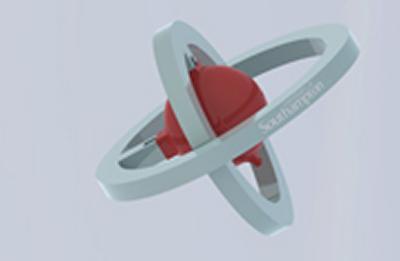Exploring Earth's atmosphere using the world’s first fully ‘rapid prototyped’ air vehicle

Engineering scientists at the University of Southampton are flying the world’s first fully rapid prototyped air vehicle this week, to help develop new technologies that probe the Earth's atmosphere using an unmanned platform.
The vehicle is part of the ASTRA (Atmospheric Science Through Robotic Aircraft) project, and it aims to demonstrate how a low-cost, bespoke high altitude platform could be developed and manufactured over a period of mere days and used to send a payload with atmospheric monitoring equipment into the upper atmosphere.
The entire structure of the balloon-borne pod – dubbed the ASTRA Atom -- has been printed, and the on-board data logging equipment has been built using Microsoft's rapid electronic prototyping toolkit .NET Gadgeteer (http://netmf.com/gadgeteer/). The Atom was printed on the University’s 3Dprinter, which fabricates plastic objects, building up the item layer by layer.
The aircraft is protected by two foam ‘orbits’, manufactured using a computer-controlled hot wire cutter at the University’s Engineering Design and Manufacturing Centre, which are designed to break on landing and absorb the energy of the impact.
Dr András Sóbester, University of Southampton Lecturer and a Royal Academy of Engineering Research Fellow, says: “The rapid prototyping of bespoke platforms like the ASTRA Atom enables scientists to deliver a variety of instruments far into the stratosphere after a very short design and manufacture cycle. This may be required for testing purposes, as part of an iterative development process or there may be a sudden need to make observations of phenomena such as volcano eruptions or nuclear fallout. In such cases, rapid prototyping translates into fast response and timely measurements that could not be obtained in other ways.”

Dr Steven Johnston, from the University of Southampton’s Microsoft Institute of High Performance Computing, adds: “The challenges of developing such systems are varied as the aircraft has to be able to operate in the harsh, low pressure, low density environment of the upper stratosphere, as well as in the dense and turbulent lower troposphere. Additionally, weight and power requirements of all on-board systems have to be minimised. The need to keep weight and cost to a minimum, while providing bespoke architectures demands novel manufacturing technologies, such as 3D printing, too.
“Using conventional materials and manufacturing techniques, such as composites, developing such platforms would normally take months. Furthermore, because no tooling is required for manufacture, radical changes to the shape and scale of the ‘pod’ can be made with no extra cost.”
The ASTRA aircraft will have its maiden flight today (Wednesday 07 December) at Microsoft Research’s 8th annual Think Computer Science event at The Imperial War Museum in Duxford. The event is a unique opportunity for year 8 and 9 students to gain an insight into the work of scientists and view a selection of the latest technologies in development through presentations and interactive demos.
Unfortunately, due to high winds on the 7 December the maiden flight of the ASTRA Atom was postponed. It will now take place at a later date.